Welcome to your go-to guide on what to do before you dig in NZ. Whether you’re planning to install a fence, plant trees, or start a backyard project, there’s more at stake than just grabbing a shovel. Underground services like gas lines, power cables, water pipes, and internet cables can be hidden just below the surface, and damaging them can lead to costly repairs, legal trouble, or even serious injury. Many New Zealanders don’t realise that even simple DIY projects require a quick check before breaking ground. This guide walks you through the key steps, safety checks, and legal responsibilities every homeowner or DIYer should know, so you can dig smart and stay safe.
Before you dig in NZ, always check for underground utilities like gas, water, power, and internet cables. Submit a free location request, review the utility plans you receive, and mark your dig site accurately. This helps you avoid costly damage, legal issues, and safety risks.
Table of Contents
Why You Can’t Just Start Digging
Digging in your backyard might seem simple, just grab a spade and get to work, right? But in New Zealand, that one action could lead to serious trouble if you don’t take the proper steps first. Beneath the surface of your property lies a hidden network of essential services that keep homes running. These include water mains, gas pipelines, power cables, and fibre internet lines. Striking any of them, even by accident, can cause major disruptions, injuries, or costly damage. That’s why you can’t just start digging without checking what’s underground.
What Lies Beneath: Water Pipes, Power Cables, Gas Lines, Fibre
Most homes and properties in NZ have critical infrastructure buried just below the surface. These utilities are usually not marked or visible to the eye, making it easy to hit one by mistake. Here’s what you might be digging into:
- Water Pipes: These supply drinking water to your home and may be shallow in some areas.
- Power Cables: Live electricity lines can be extremely dangerous if damaged or exposed.
- Gas Pipelines: Damaging one of these can cause leaks, fires, or even explosions.
- Fibre and Phone Lines: You may lose internet and communication services, which can be costly to repair.
These lines often run right through private sections of land, not just on public property. Whether you’re planting trees, installing a fence, or building a deck, you could be just centimeters away from hitting something dangerous.
Risks Involved: Injury, Legal Issues, Expensive Repairs
Failing to check before digging comes with real risks, and they affect more than just your project. Here’s what can go wrong:
- Injury or Fatality: Hitting a high-voltage power line or gas pipe can result in serious injuries or death.
- Service Disruption: You could knock out power or water for your home and your neighbours.
- Legal Responsibility: If you cause damage, you may be liable for repair costs and could face penalties under safety laws.
- Repair Costs: Fixing a severed utility line isn’t cheap. You could be on the hook for thousands of dollars, especially if emergency repairs are needed.
Digging without checking is not only risky, it’s irresponsible. Even small jobs like post holes or shallow trenches can lead to damage if you don’t know what’s down there.
Real-Life Example Of A Digging Mistake Gone Wrong
A Christchurch homeowner decided to plant a row of shrubs along their driveway. It seemed like a routine task, so they started digging without contacting BeforeUdig. Within minutes, they struck a fibre cable. Internet service was knocked out for several homes on the street, and a technician had to be called in for emergency repairs. The homeowner ended up paying for the damage and had to delay their landscaping project.
This example shows how quickly a minor project can spiral into an expensive and stressful situation. And in some cases, the consequences can be much worse, especially if power or gas lines are involved.
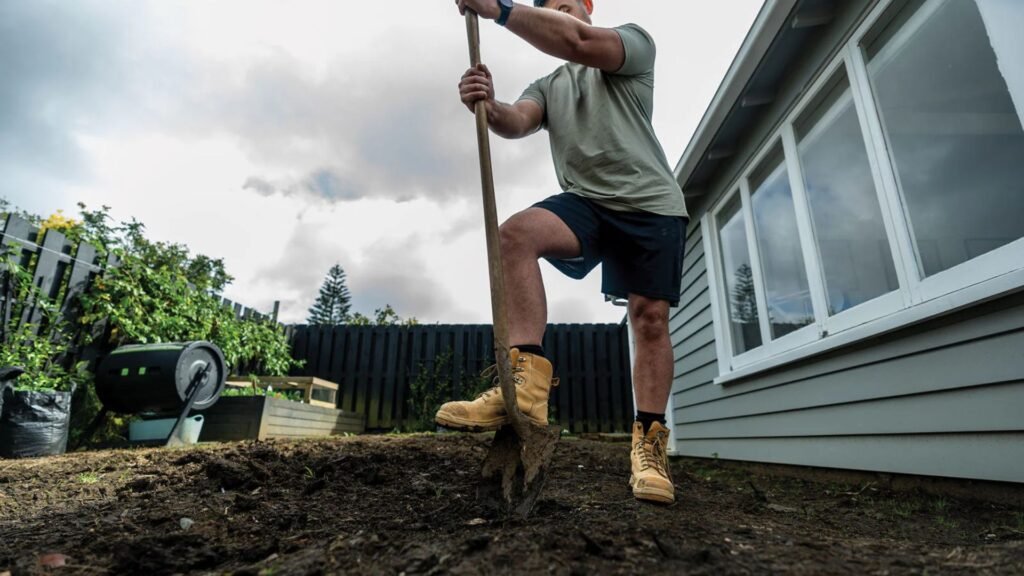
Legal Responsibilities In NZ
Before you dig on any property in New Zealand, whether it’s your own backyard or a construction site, you have legal obligations to follow. These rules aren’t just for big contractors or businesses. They apply to everyone, including homeowners, landlords, DIYers, and small project managers. Failing to follow these responsibilities can lead to serious consequences, including fines, repair costs, and safety risks.
Who Needs To Follow The Rules?
Everyone. It doesn’t matter if you’re digging a small garden or installing a retaining wall. If you’re disturbing the ground, you’re responsible for checking what’s underneath. That means:
- Homeowners doing DIY projects
- Tenants modifying rental properties with permission
- Tradies and subcontractors hired for residential work
- Businesses managing new builds or site developments
People often assume that small projects don’t need the same level of caution, but one wrong move can damage underground services like gas lines or fibre cables. Even hand digging with a shovel can create legal problems if something goes wrong.
Brief Overview Of The Health And Safety At Work Act
The Health and Safety at Work Act 2015 (HSWA) is New Zealand’s main workplace health and safety law. While it applies broadly across industries, parts of it are especially relevant when digging or disturbing the ground.
Here’s what matters in this context:
- The Act places duties on anyone who does work that could affect health and safety. That includes contractors, property owners, and even individuals working on their own land.
- You must take steps to eliminate or minimize risks. That means identifying underground utilities before you dig.
- You must consult with others involved in the work. If you hire a contractor, both parties have shared responsibilities.
Not taking these steps can be seen as negligence. If something goes wrong, like a burst gas pipe or cut power cable, the incident may be investigated by WorkSafe NZ, which can lead to penalties or prosecution.
Why Councils And Utility Companies Take This Seriously
Local councils and utility providers have clear reasons for enforcing these rules. When someone hits a service line, the fallout affects more than just the person digging.
- It can shut down power, gas, water, or internet for nearby homes.
- Emergency response teams may be required, especially for gas leaks.
- Repairing damaged infrastructure is expensive and time-consuming.
- The affected utility owner often seeks to recover costs from the person at fault.
These companies also keep detailed records of underground assets, so they expect you to use tools like BeforeUdig to check before breaking ground. If you skip this step, they may view it as a failure to act responsibly.
Legal responsibilities exist to protect lives, public services, and infrastructure. Taking time to understand and follow them isn’t just the law, it’s common sense. Always plan before you dig, make a location request, and know what’s beneath your feet.
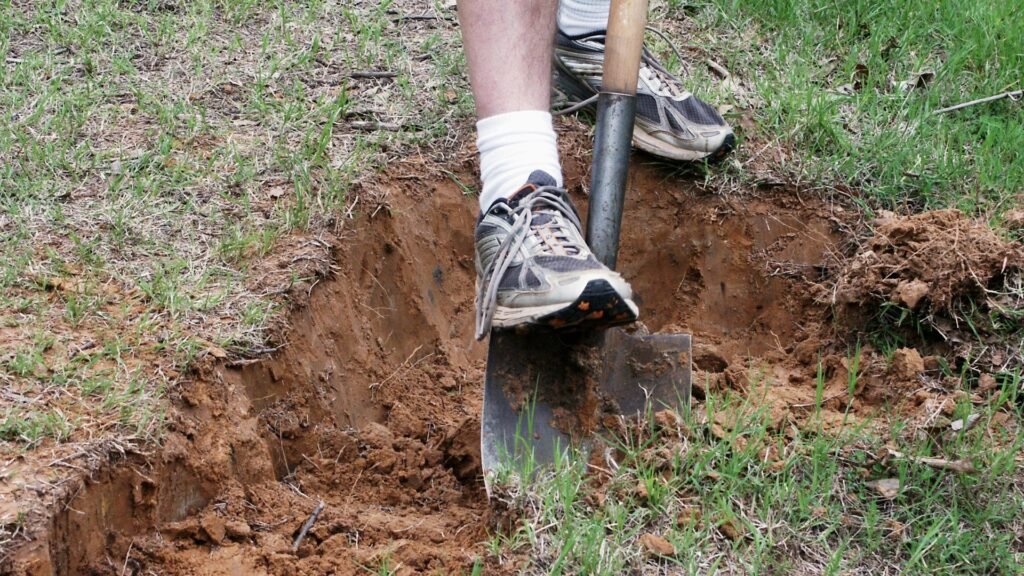
Know What’s Underground: Contact Before You Dig
Before you put a shovel in the ground, there’s one step every New Zealander should take seriously, knowing what’s underground. Whether you’re digging in your backyard or planning a major project, it’s your responsibility to check for buried utility lines before starting. That’s where Before U Dig NZ comes in. It’s a free and essential service that helps homeowners, tradespeople, and contractors avoid damaging underground infrastructure.
What “Before U Dig NZ” Is
Before U Dig NZ is a national referral service that connects you with the owners of underground utilities across New Zealand. It’s designed to help you locate pipes, cables, and other services that may be buried on your site. The service doesn’t physically inspect your property, instead, it gathers and sends you detailed maps and documents from asset owners like power companies, water suppliers, gas providers, and telecom networks.
This isn’t just for big projects. Even if you’re planting a tree or installing a fence, the risk of hitting a buried line is real. One small mistake can lead to power outages, service interruptions, or worse, serious injury. Using Before U Dig NZ can prevent these outcomes and protect everyone involved.
What Services They Offer
Before U Dig NZ provided several useful services, all aimed at helping you dig safely and legally.
- Free Location Requests: You submit a request through their website, and they coordinate with utility companies to get maps of any underground services in the area.
- Online Mapping Tools: The platform lets you view utility zones and download plans.
- Educational Resources: You’ll find guides, tips, and FAQs on how to dig responsibly.
- Emergency Contacts: In case you damage a line or pipe, the site lists who to call immediately.
These tools are available to anyone, homeowners, landscapers, builders, or contractors.
How It Works: Submitting A Free Location Request
The process of submitting a location request is simple and takes just a few minutes.
- Visit the Website: Go to BeforeUdig.
- Create an Account: You’ll need to register or log in.
- Submit the Request: Enter your dig location using an address or map tool. You’ll also describe the type of work and dates planned.
- Confirm and Submit: Double-check your details and hit submit.
Once your request is submitted, it’s sent out to all utility owners who have assets in that location. They’ll reply with maps, safety info, or special conditions you need to follow.
What Happens After Your Request
After submitting your request, here’s what typically happens.
- Receive Utility Plans by Email: You’ll get PDF maps showing where underground assets are located.
- Review the Documents: Each utility may send different details. Read them carefully before starting.
- Check Validity Period: Most plans are valid for around 30 days. If you delay the work, submit a new request.
- Mark Your Site: Use the maps to identify where it’s safe to dig. You can also use paint or flags to mark areas on the ground.
In some cases, you may be asked to contact the utility company directly or hire a professional locator for extra support.
Taking a few minutes to use Before U Dig NZ can save you from unexpected costs, delays, and safety risks. It’s free, easy, and crucial for any digging project, big or small. Always check first. It’s not just smart, it’s the responsible thing to do.
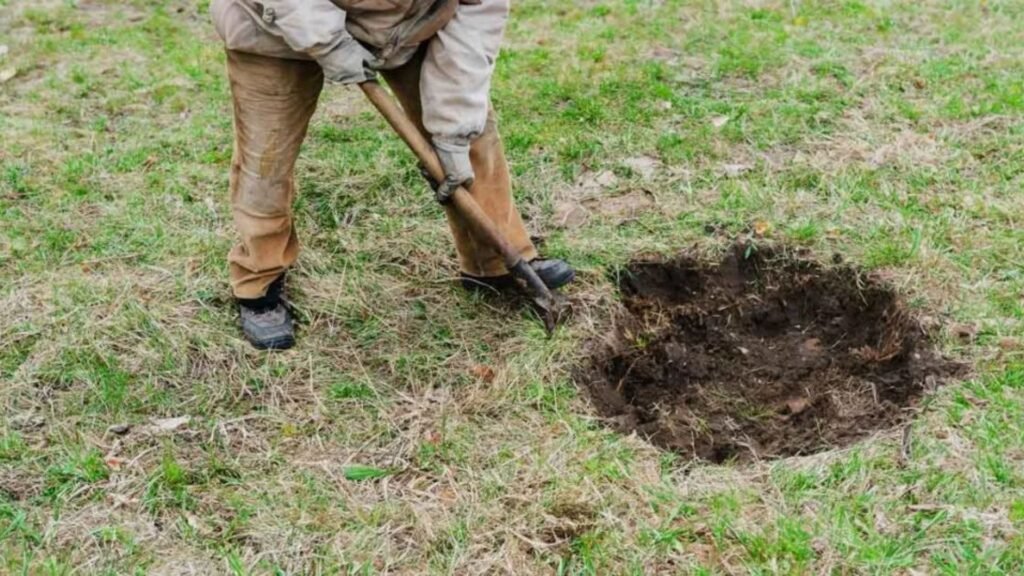
How To Make A Location Request (Step-By-Step)
Before you pick up a shovel, it’s critical to know what’s underground. Whether you’re planning to build a fence, dig a trench, or plant a tree, one wrong move can damage pipes, cables, or gas lines. That’s where a location request comes in. It’s a simple, free process that can protect you from costly mistakes.
Here’s exactly how you can make a location request through the official Before U Dig NZ website:
Go To The Before U Dig NZ Website
This is the official platform used across New Zealand to request underground utility information. It connects you with the companies that own the buried services at your site.
There’s no need to call around or guess what might be underground. The website is easy to use and designed for both homeowners and professionals.
Enter Your Site Address Or Coordinates
Once you’re on the homepage, begin your request by entering the physical address of your dig site. You can also use GPS coordinates if you’re working in a rural or undeveloped area where street addresses might not exist.
The map tool on the site allows you to zoom in and mark the exact area you’ll be working on. Be as accurate as possible, this ensures the plans you receive are relevant to your site.
Select Your Work Type And Dates
Next, you’ll be asked to describe the type of digging or excavation you’re planning. This could be:
- Fence installation
- Landscaping
- Utility trenching
- Driveway construction
- Tree planting
You’ll also need to choose your proposed start and end dates. Make sure these are realistic, as most utility plans expire after 30 days.
Confirm And Submit Your Request
Once you’ve filled in all the required fields, double-check everything. A small mistake in your address or work area could lead to receiving incorrect plans.
After confirming, hit the “Submit” button. Your request will then be sent to all relevant utility owners and asset managers linked to your dig site.
There’s no fee to make a location request. It’s a free public safety service supported by utility providers in New Zealand.
Wait For Your Response And Asset Plans
After submission, you’ll receive an email with responses from each utility owner. Most will send you downloadable PDF plans showing where their underground assets are located.
- This may take anywhere from a few hours to a couple of days.
- Some responses will come with instructions, such as calling before you dig or using a locator.
- If there’s no infrastructure in your work area, they’ll often respond with a “No Conflict” notice.
Always read the plans carefully. If you’re unsure, don’t guess, reach out to the asset owner or hire a utility locator.
Making a location request is quick, free, and essential. Skipping this step isn’t just risky, it could lead to serious injury, fines, or utility outages. Every dig starts with a check. Always use Before U Dig NZ before you break ground.
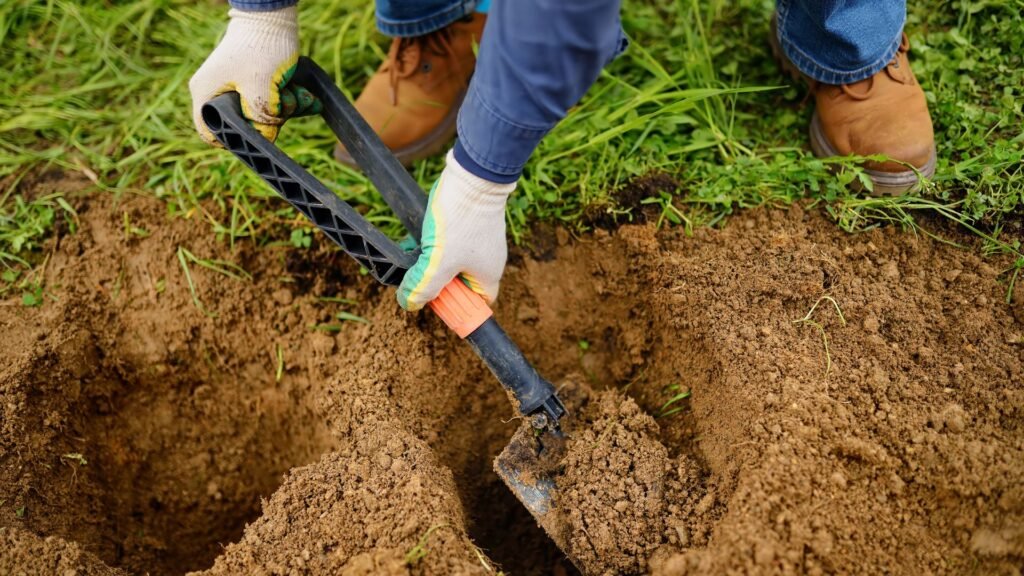
Understanding The Utility Plans You Receive
When you submit a location request on BeforeUdig, you’ll receive a set of utility plans in response. These plans are essential to help you dig safely and legally. But they can look confusing if you’ve never seen one before. This section breaks down what these plans actually show, how to read them properly, and what’s missing from them, so you know exactly what you’re working with before you pick up a shovel.
What The Plans Show
The utility plans show the locations of underground services owned by different utility companies. These include:
- Water supply pipes
- Sewer lines
- Stormwater drains
- Gas pipelines
- Power cables
- Telecommunications and fibre-optic lines
Each plan usually comes from a different asset owner, depending on what’s under your site. The maps may look technical, but they’re designed to help you identify where you should not dig without care.
You’ll often see color-coded lines, symbols, and reference points. Some will show distances from fixed landmarks, like a fence or boundary, while others may use GPS coordinates.
How To Read Them Correctly
Start by checking the legend or key. This tells you what each color, line type, and symbol means.
For example:
- Red might indicate power cables
- Blue could represent water pipes
- Orange might be for telecommunications
- Yellow could show gas lines
Match these colors and lines to your dig site. Pay attention to:
- Depth indicators (if provided)
- Offsets from boundaries or kerbs
- Direction of flow for pipes or drains
If the plan shows a line running through or near your project area, you need to be cautious. You may need to mark the ground based on these plans before digging.
Don’t assume that the location is exact to the centimetre. Plans are a guide, they don’t replace physical detection.
What’s Not Included (E.g., Private Lines)
Not everything underground is shown on these plans.
What’s usually not included:
- Private water lines
- Electrical cables installed by homeowners or builders
- Irrigation systems
- Storm drains on private land
- Pipes or cables added after the original build
These private lines are your responsibility. They may have been added without council approval or not recorded in official systems. If you think there may be something underground that’s not shown, get a professional locator to scan the area.
Who To Call If You’re Unsure
If you’re unsure about any part of the plan, don’t guess. Contact the utility owner listed on the plan. Each map will include contact information, such as a phone number or email for technical support.
You can also:
- Call BeforeUdig directly for general help
- Hire a certified underground locator for on-site marking
- Ask your local council for advice on unregistered services
Never dig unless you fully understand what the plans show. One phone call can prevent injury, damage, or expensive repairs.
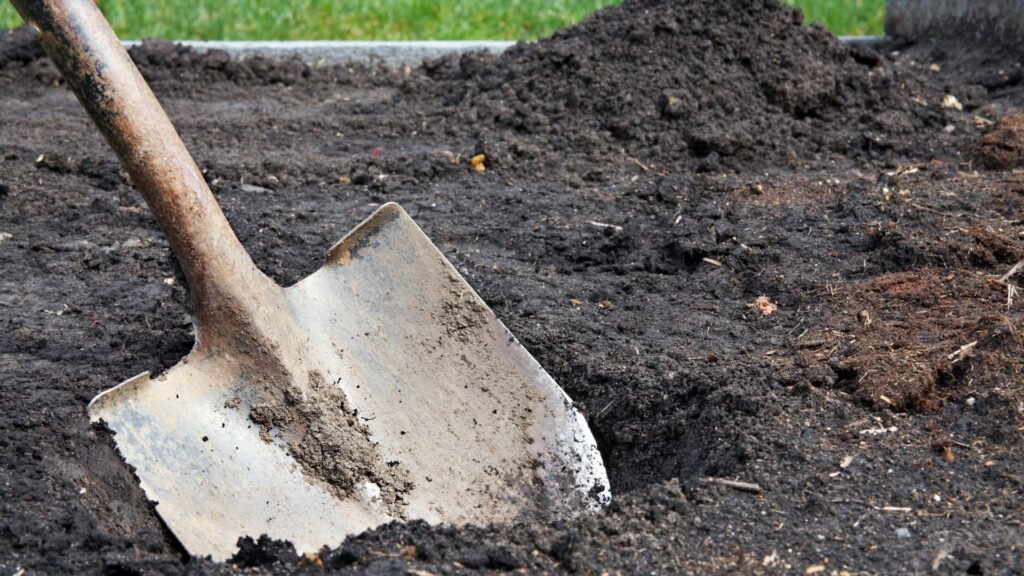
Site Marking And Confirmation
Before you start any digging work in New Zealand, it’s not enough to just look at the utility plans you received from BeforeUdig. You also need to physically mark your worksite. This step ensures that what’s on paper is accurately represented on the ground, and it helps prevent costly and dangerous mistakes.
How To Physically Mark The Area Before Digging
Once you’ve reviewed the utility maps and confirmed the location of underground services, the next step is to mark the proposed dig site. You should walk around the area and clearly outline where you plan to dig. Marking helps you visualize the proximity to underground services and plan your digging route safely.
Here’s how to do it properly:
- Measure and mark the boundaries of your dig site.
- Refer to the plans and stay at least one meter away from any marked services.
- Mark not only the dig area but also where heavy equipment might move or park.
If possible, discuss the plans on-site with anyone else involved in the work, like contractors or locators. Two sets of eyes are better than one.
Use Of Paint, Flags, Or Pegs
Different tools help mark sites clearly, depending on your surface and environment. Here’s what you can use:
- Spray Paint: Ideal for marking directly on grass, concrete, or soil. Use bright colors like white or pink to stand out. Avoid painting over utility indicators.
- Flags: These are helpful when you don’t want to damage surfaces or need temporary markers. They’re often used in grass or gardens.
- Pegs or Stakes: Great for long-term projects. These help define boundaries or caution zones, especially for larger work areas.
Make sure markings are visible from all angles and won’t fade or wash away before the project starts. If the dig will span several days, recheck your markings regularly.
When You May Need A Professional Locator
Not all utilities are easy to locate. Some may not appear clearly on plans, or the ground conditions might make things harder to identify. In these cases, hiring a professional locator is strongly recommended.
You should consider calling a locator if:
- The utility plans are vague or missing details.
- The site has been altered since the utilities were installed.
- You’re working on a complex or high-risk site.
- You want full peace of mind before operating machinery.
Professional locators use advanced tools like electromagnetic locators or ground-penetrating radar (GPR) to pinpoint services accurately. They often mark detected lines with flags or paint for you, giving you clear boundaries to work around.
Taking time to mark your site correctly isn’t just a formality, it’s a crucial part of safe digging. Whether you’re doing a small DIY project or working with a team, site marking and confirmation reduce your risk of damaging hidden services and keep everyone safer on-site. Always double-check your markings, respect clearance zones, and when in doubt, call a locator. Dig smart, dig safe.
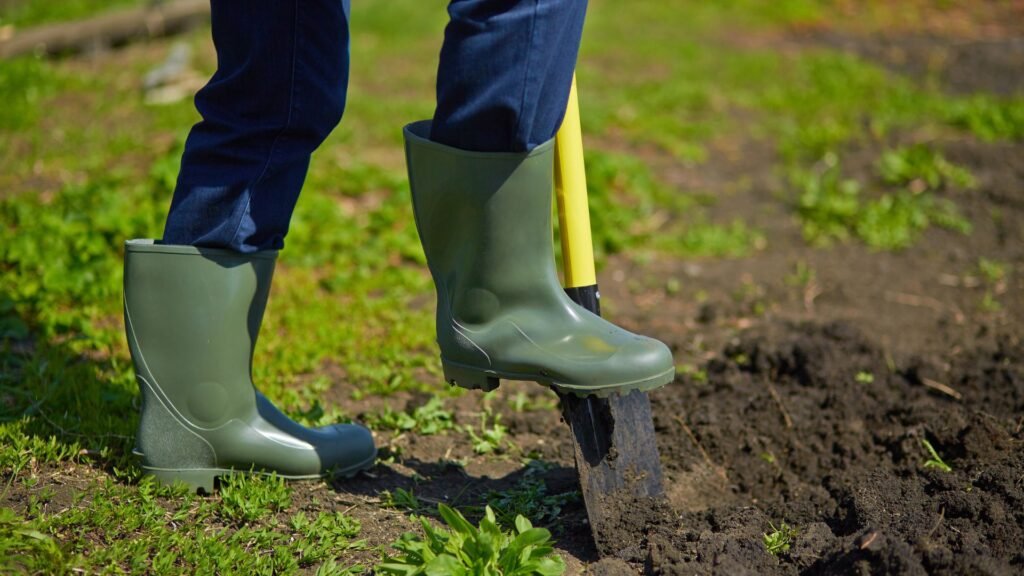
Special Rules For Rural, Residential, And Commercial Sites
Digging isn’t a one-size-fits-all process. Where you dig, whether in a rural paddock, a suburban backyard, or a commercial car park, can change everything. Each setting comes with its own utility layout, risks, and responsibilities. If you assume the same rules apply everywhere, you’re putting yourself and your property at risk. Here’s what you need to know before digging on different types of land in New Zealand.
Differences In Utility Layout
Utility networks are not laid out the same way across all property types. In residential areas, utilities like electricity, water, gas, and fiber are often laid in predictable patterns and closer to the surface. Subdivisions may share lines, which makes damage more likely if you don’t double-check. In contrast, commercial properties often have more complex networks due to heavier infrastructure, think larger power loads, data lines, or drainage systems running in different directions.
Rural properties are even less predictable. Services may be located far from the road or buried deeper underground to protect from machinery and livestock. Some utilities in rural areas may not even appear on official maps because they were installed privately years ago. This variation makes it essential to review utility plans thoroughly, no matter the location.
Rural Areas May Still Have Buried Lines
A common mistake is assuming rural areas are safe to dig without checking. Just because you’re surrounded by open land doesn’t mean it’s free of underground assets. Water pipes, farm irrigation systems, buried electric fencing, and power supply cables are often hidden just below the surface. In some cases, old infrastructure might still be active without visible signs on the ground.
Always request maps through BeforeUdig.co.nz,even for seemingly isolated or low-risk locations. If you’re planning to dig trenches, install fences, or plant trees on farmland, double-check the entire work zone. And if you’re unsure whether utilities are public or private, reach out to a locator for on-site help.
Why Townhouses Or Subdivided Properties Might Be Tricky
Townhouses, duplexes, and subdivided sections introduce another layer of complexity. These properties often share utility connections. A gas line, for example, might serve two or three homes from a single source. A water main might run underneath driveways or garden beds that appear private but aren’t. In newer subdivisions, cables can be rerouted around odd boundaries due to space constraints or previous landscaping.
What makes it trickier is that utility plans may show only the main line, not the branches or private service lines within your boundary. That means relying on generic maps without follow-up could cause you to hit something important. Even simple tasks like installing a letterbox or fence post could damage a shared line.
In these cases, always:
- Read the utility plans closely
- Ask your property manager or builder if the area has shared utilities
- Consider getting a certified locator to mark out buried lines accurately
Before you dig, think beyond your shovel. The ground beneath you may hold more than dirt, and depending on where you live or work, the layout and risk vary greatly. Whether you’re in a rural setting, a suburban lot, or a commercial site, the key is to plan ahead, get the right information, and dig with confidence.
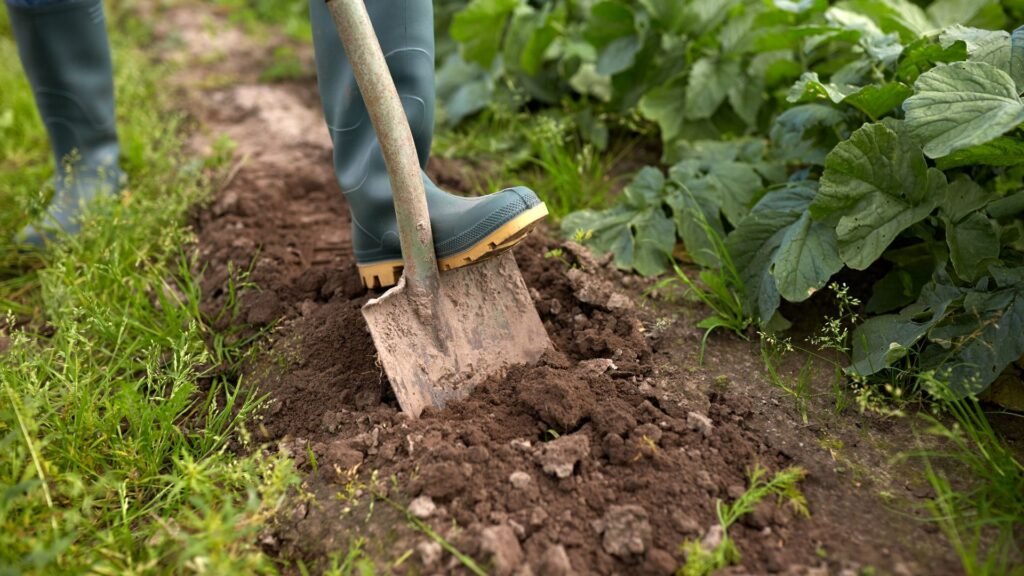
Common DIY Projects That Require Dig Checks
Before you grab your shovel and start your next outdoor project, there’s one step you should never skip checking what’s underground. Many New Zealand homeowners assume that small backyard jobs are safe to start without checking for buried services, but that’s where costly mistakes happen.
Even simple DIY tasks can pose serious risks if you accidentally hit a gas line, water pipe, or fibre cable. Below are some of the most common projects where a dig check is essential. Whether you’re using hand tools or machinery, taking a few minutes to check can save you from fines, damage, and injury.
Installing A Fence Or Deck
It might seem harmless, but driving fence posts into the ground without knowing what’s underneath is a major risk. Power, water, and communication cables are often buried close to the surface along property boundaries, exactly where fences are usually built.
If you’re building a deck, you’ll likely be digging deeper to place footings or support posts. This increases the chance of hitting underground infrastructure. Always lodge a location request at BeforeUdig before you start measuring and marking your layout.
Digging A Trench Or Garden Bed
Trenching to install irrigation, electrical lines, or drainage pipes requires more than just a straight path, it needs careful planning and awareness of existing utilities. Even when digging a small garden bed, the depth you reach could interfere with cables or pipes installed by previous homeowners or local utility services.
Whether you’re planting herbs or running a drainage line, you have a responsibility to know what lies below. Checking in advance prevents damage and delays, and keeps your garden project running smoothly.
Building Retaining Walls Or Drainage
Retaining walls often require deep post holes and compacted backfill. This puts them at risk of intersecting underground services, especially near sloped land, property lines, or older homes where original service maps may be outdated.
Similarly, drainage work like French drains or soak pits involves excavation in areas that could house stormwater pipes or electrical conduits. If your digging affects or damages these systems, it could lead to costly repairs and even legal action. Don’t start without having utility plans in hand.
Planting Trees Or Large Shrubs
Planting trees might not seem like a big deal, but it can be one of the riskiest DIY jobs if you dig without checking. Tree roots can interfere with underground infrastructure over time, and the initial hole you dig could hit something buried just below the surface.
If you’re planting in a spot near driveways, fences, or easements, it’s especially important to confirm what lies below. A simple call or online request can save you the hassle of disrupting services or being held liable for damages.
- Final Tip: Always assume there’s something underground, even if you’ve dug in the same area before. Plans can change, and new infrastructure may be added without your knowledge. Lodging a free request through BeforeUdig.co.nz is fast, easy, and can prevent serious problems down the line.
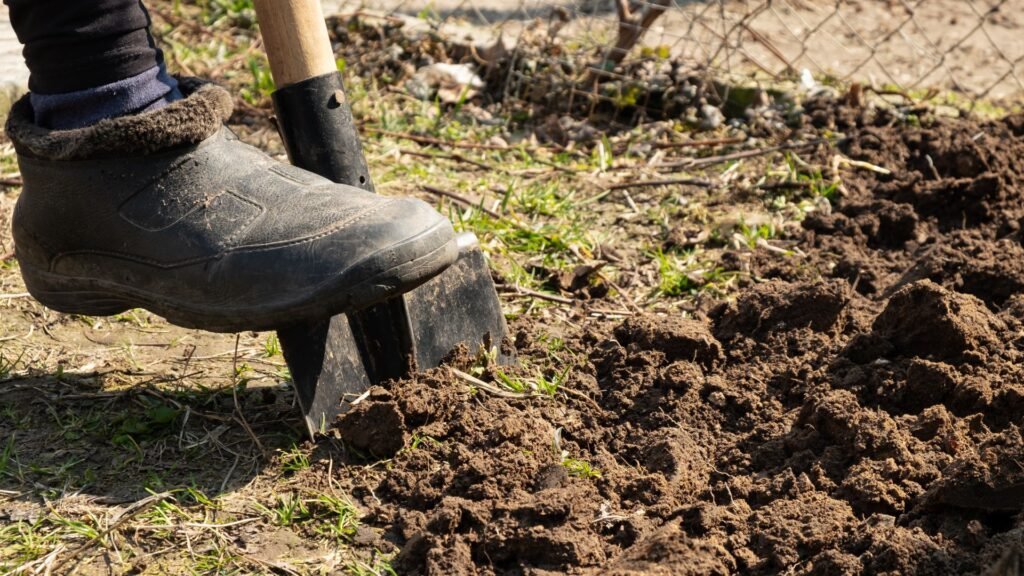
What Happens If You Hit A Line
Accidentally hitting an underground utility line can turn a simple DIY job into a serious situation. Whether it’s a water pipe, power cable, or gas line, the consequences can be dangerous and expensive. Here’s exactly what you need to do if you strike a line while digging in New Zealand.
Immediate Steps To Take
Stop everything immediately. Do not continue digging or try to fix anything yourself. If the strike causes visible damage, like a broken pipe, exposed cable, or hissing sound from a gas leak, move everyone away from the site right away. Keep at least several meters back, especially if there’s any chance of fire or explosion.
Turn off any nearby machinery or tools. If there’s water flooding the area or sparks from electrical lines, stay clear. Don’t touch any exposed wire or pipe with your hands, tools, or clothing.
Who To Contact (Emergency Numbers Or Asset Owners)
If the situation is dangerous, like a gas leak, major water burst, or electrical hazard, call emergency services immediately on 111.
Then, contact the asset owner. You can usually find their details on the utility plans you received from BeforeUdig Common utility companies in NZ include:
- Vector (electricity and gas)
- Chorus (fibre and phone lines)
- Watercare or your local council (water and drainage)
- Firstgas, Powerco, and others depending on the region
Make sure to have the location, time, and a short description of what happened ready when you call.
Legal And Financial Consequences
You are legally responsible for any damage caused during your digging project, even if it was an accident. This can include:
- The cost of repairing the damaged line
- Fines from the utility provider or local council
- Liability for injury or disruption of public services
In some cases, your insurance may cover these costs, but only if you followed all required steps, including submitting a location request and working within the conditions provided.
Neglecting to check before digging can be seen as careless or negligent. If you skipped the location request entirely, you may be held fully liable.
How To Stay Calm And Act Responsibly
Mistakes happen, but how you respond matters. Stay calm, don’t hide the damage, and report it right away. Trying to cover up the problem or delay the report can lead to greater consequences later on.
Take photos of the site (only if it’s safe), and document what you were doing at the time of the incident. This can help you when dealing with utility companies or insurance claims.
If you’re unsure what to do next, consider bringing in a professional locator or contractor for future work. It’s a small price to pay for peace of mind and safety.
Hitting a line can be stressful, but quick thinking and responsible action can keep people safe and help fix the issue faster. Always dig with care, and if you’re not sure, don’t dig at all.
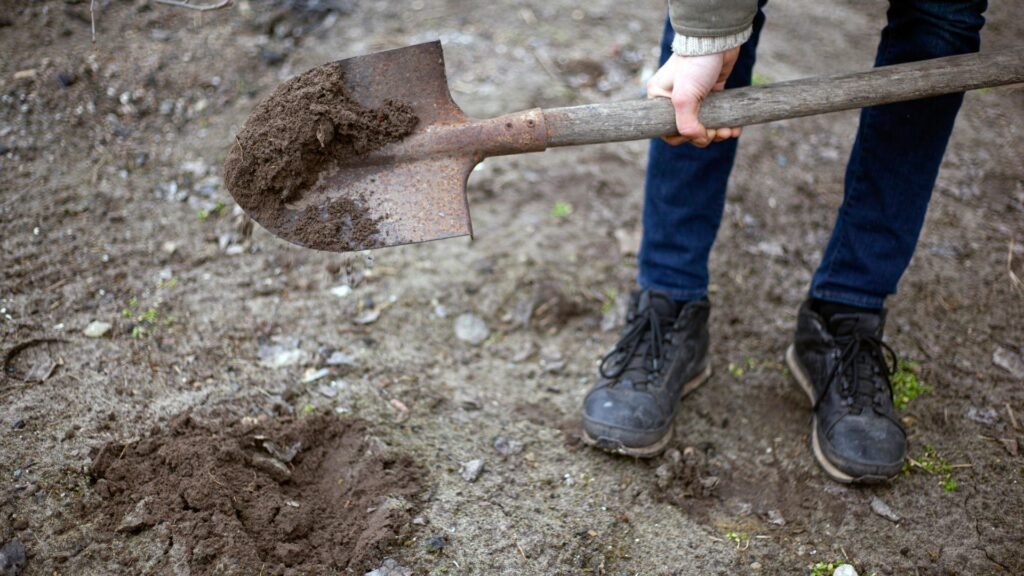
Extra Tips To Stay Safe
Even if you’ve followed the basic steps before digging, there are a few more precautions that can help prevent accidents, fines, or major disruptions. These extra tips are based on common issues that occur when people get too comfortable or make assumptions. Staying alert and following through with care can make all the difference when working on any property in New Zealand.
Don’t Rely On Guesswork Or Old Maps
It’s tempting to go by memory or use a diagram from a previous project, but that’s a risky move. Underground services can shift, new lines can be added, and records might not reflect recent changes. Guessing the location of a gas or fibre line could result in service outages, injuries, or even emergency callouts.
Use current, up-to-date utility plans from BeforeUdig. These are supplied directly by utility owners and give you the most accurate view of what lies beneath. If you’re unsure about any area, stop and ask for clarification before going ahead.
Call If Something On-Site Doesn’t Match The Plan
Sometimes the reality on the ground doesn’t match what’s shown in the plans. Maybe you see a marked pipe that wasn’t listed, or a cable is running in a different direction than expected. This happens more often than people think.
In these cases, don’t just push forward. Contact the utility owner or BeforeUdig support to confirm the details. A simple phone call can help avoid a costly mistake. Always assume that unidentified lines are live and potentially dangerous.
Double-Check Before Using Heavy Equipment
Using a shovel is one thing. Operating a post hole borer, auger, or digger is another. Before you fire up any heavy machinery, re-check your plans and make sure the dig site is marked out clearly. Even one meter in the wrong direction could hit a high-voltage cable or burst a water main.
Take a moment to walk through the site again. Re-confirm your boundaries and talk with anyone helping you on the job. Make sure everyone understands the plan before the first machine moves.
Re-Apply If Plans Expire Or You Delay The Job
Most utility plans from BeforeUdig are only valid for 30 days. That’s because underground assets can change, new lines may be installed, or older ones rerouted. If your project gets delayed for any reason, don’t assume the old plans are still good.
Always check the date on your plans. If it’s been more than 30 days, or if you’re unsure, submit a new location request. It’s free, fast, and keeps your project compliant with safety expectations. Taking this extra step could save you thousands in repair bills or legal issues.
These extra tips may seem small, but they matter. Most digging accidents in NZ happen not because people skipped the rules, but because they rushed, assumed, or didn’t double-check. So take your time, follow these tips, and make sure every dig starts and ends safely.
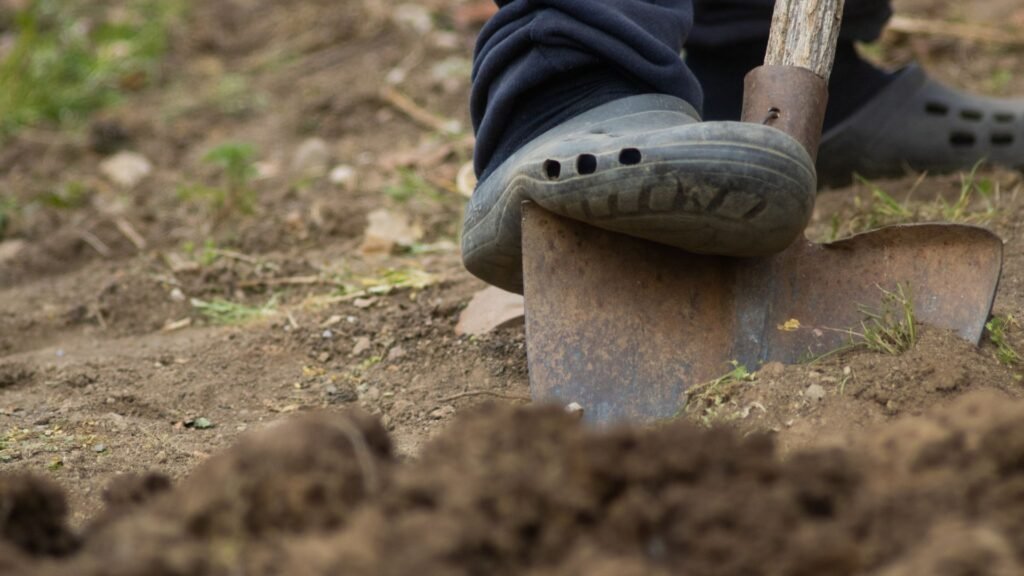
How Often You Need To Request Plans
When you’re planning to dig, it’s not enough to check once and assume the job’s covered. Utility plans are time-sensitive, and the responsibility to keep them up to date lies with you. Whether you’re working on a quick weekend project or a large job stretched over several weeks, knowing how often to request plans can save you from unexpected problems.
One-Time Project Vs. Multiple Stages
If you’re completing a one-off project like planting a tree or installing a letterbox, a single request to BeforeUdig.co.nz will usually be enough. But if your project is divided into stages, like laying a long fence over several weekends or building a retaining wall section by section, you may need to submit a new request before each stage.
- Here’s why: digging conditions can change, utility companies may update infrastructure, and service lines can be altered or added over time. Breaking your job into smaller parts? Treat each as a separate check-in point.
Expiry Of Plans (Usually 30 Days)
Utility plans typically expire 30 calendar days after they’re issued. This isn’t a suggestion, it’s a safety guideline. After that period, the plans are considered outdated, and using them can be risky.
Even if you received detailed maps and marked the area, things can change within a month. If your project is delayed or interrupted, make it a habit to resubmit your location request once the 30-day window closes. It’s free, and it gives you peace of mind.
Keep Documentation For Future Use
Always save a copy of the utility plans and any related correspondence. If there’s ever a dispute or issue later, say you accidentally hit a cable or need to confirm you followed the proper process, having this paperwork on hand protects you.
Here’s what to keep:
- PDFs of the utility plans
- Notes or sketches of your marked dig area
- Any locator reports or professional advice
- Dates of when you submitted and received information
Keeping this documentation isn’t just good practice, it shows you did your due diligence. It may also help with insurance claims or legal questions down the track.
By following these simple steps, you ensure every dig is informed, safe, and legally sound. Don’t guess. Don’t assume. Always double-check. If in doubt, request again.
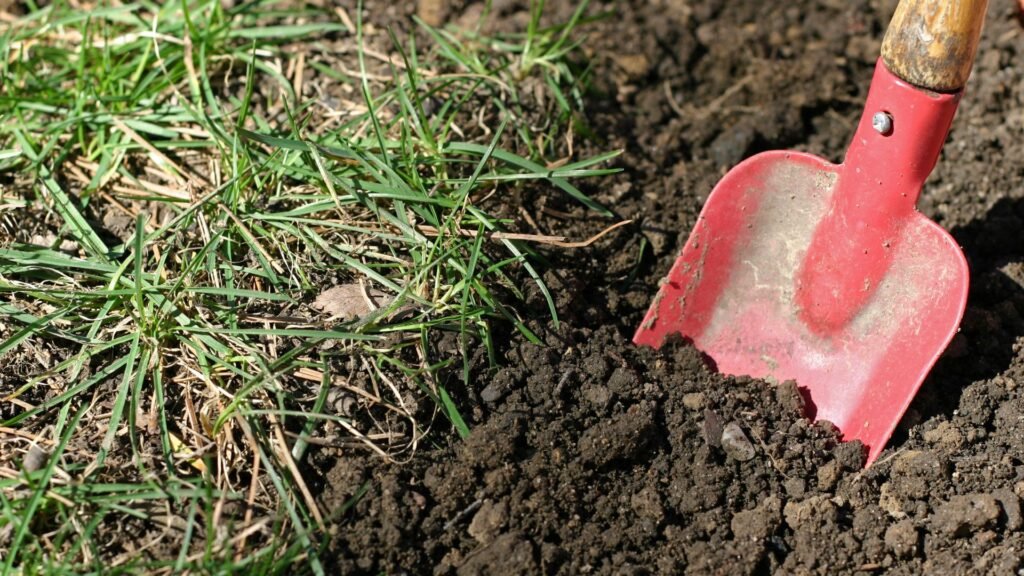
When To Get Professional Help
Digging on your property might seem simple, until you realize how much can go wrong. While many small jobs can be handled on your own, there are clear situations when calling in a professional isn’t just smart, it’s necessary. From understanding utility plans to safely locating underground assets, a trained expert can save you time, money, and stress.
Utility Locators Vs. General Diggers
Not all professionals are the same. A general digger or contractor may have experience with excavation, but that doesn’t mean they’re trained to identify underground services. That’s where a utility locator comes in.
Utility locators specialize in finding buried infrastructure like gas pipes, water mains, fibre optics, and power cables. They use tools like electromagnetic scanners and ground-penetrating radar to detect services you won’t find with the naked eye. This is especially important when utility plans are vague or incomplete, which is common in older properties or rural areas.
Hiring a locator is often the best move before you even pick up a shovel, especially if you want to avoid delays or costly mistakes later.
For Deep Or Complex Projects
The deeper or more complicated your dig, the higher the risk.
If your project involves:
- Digging deeper than 300mm
- Trenching along property boundaries
- Working near roads, footpaths, or shared driveways
- Preparing land for construction or major landscaping
You should involve a professional early on.
Deep excavation can disrupt multiple layers of underground services. You may also need council approval or safety compliance if you’re working near public infrastructure. A qualified expert can help you navigate those requirements and ensure you’re digging safely and legally.
When In Doubt, Bring In A Pro
Not sure what’s under the surface? Plans don’t match what you see on site? That’s a sign to stop and get help.
Here’s when you should call a pro:
- The utility plans are unclear or missing details
- There’s evidence of previous digging or patchwork
- You’re working in a high-risk zone like near a power box or manhole
- You’ve never submitted a BeforeUdig request before
- Think of it this way: If something feels uncertain, it probably is.
Hiring a professional doesn’t just protect your property, it protects your health, your budget, and your legal standing. One wrong move can disrupt power to a street or rupture a gas line, and that’s not something you want to handle alone.
Getting expert help is not a sign of inexperience. It’s a smart, responsible step that every careful homeowner or contractor should take when the situation calls for it.
Want your digging project to be safe, fast, and stress-free? Our team is here to help every step of the way.
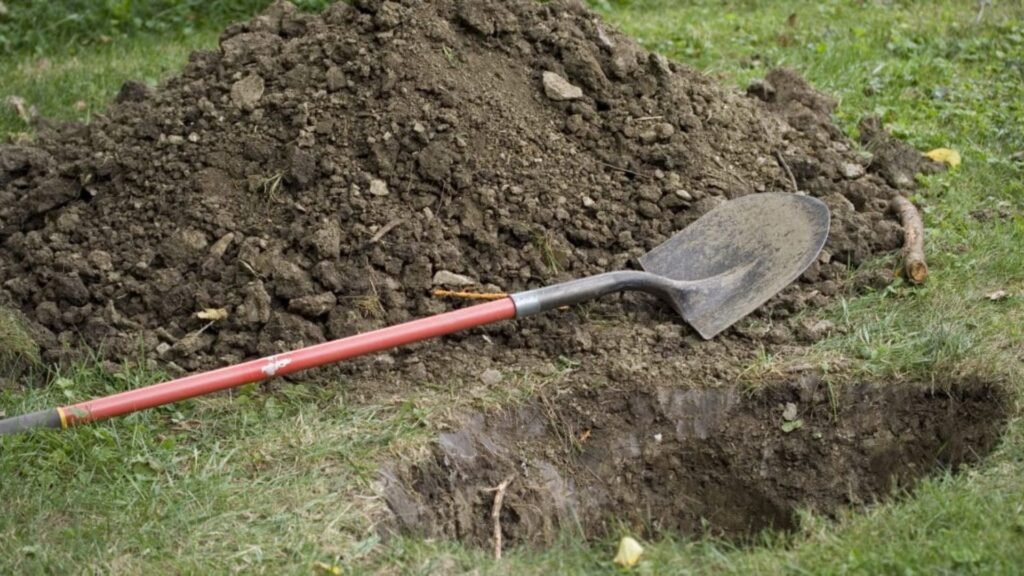
FAQs: About What To Do Before You Dig In NZ
Do I need to check before digging if I’m just using a spade or hand tools?
Yes. Even shallow digging with hand tools can damage underground utilities like fibre cables or irrigation lines. Always check first, regardless of the depth or tool.
What is BeforeUdig and why should I use it?
BeforeUdig is a free online service that helps you identify underground utility assets at your dig site. It connects you with utility owners so you can receive maps and information to dig safely.
Is it mandatory to make a location request before digging?
It’s not a legal requirement in every case, but you are legally responsible for any damage caused. Making a request protects you from injury, fines, and repair costs.
How long does it take to get utility plans after submitting a request?
Most plans are sent within 1-2 business days, but it can vary depending on the asset owners involved. Some may take longer, especially for rural or complex sites.
How long are utility plans valid after I receive them?
Plans are generally valid for 30 calendar days. If your digging is delayed beyond that period, you’ll need to submit a new request to ensure the information is still accurate.
Do I need to make a request if I’ve dug in the same spot before?
Yes. Conditions can change over time. New services may have been installed since your last project. Always submit a fresh request for each digging job.
What if utility plans are unclear or I don’t understand them?
If you’re unsure how to read the plans, contact the utility company or hire a certified locator. Misinterpreting plans can lead to damaging buried infrastructure.
Are private service lines shown on utility plans?
Not always. Most plans show public assets only. Private lines, like those installed on your property after construction, may not be included. You may need a locator to find them.
What should I do if I hit a pipe or cable while digging?
Stop work immediately. Keep people away from the area and report it to the utility owner. If there’s any danger (like a gas leak), call emergency services right away.
Can I be fined or held liable for damaging underground services?
Yes. You may be responsible for repair costs and legal penalties if you dig without checking or cause damage due to negligence. Making a free location request helps you avoid these issues.
Conclusion
Digging may seem like a simple task, but the risks beneath the surface can be serious. Hitting a buried gas pipe, water main, or power cable could result in costly damage, service outages, legal trouble, or even personal injury. That’s why checking before you dig is more than just a good idea, it’s a necessary step for every homeowner, DIY enthusiast, or small contractor in New Zealand. Taking just a few minutes to submit a free location request through BeforeUdig.co.nz can save you from unexpected delays, fines, and hazards. Whether you’re planting a tree or building a fence, one small action can make a big difference in keeping your project safe, legal, and stress-free.







